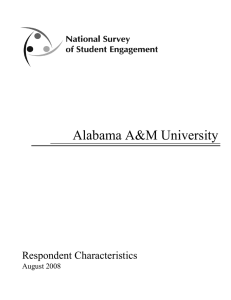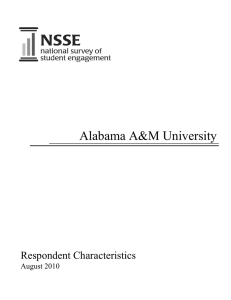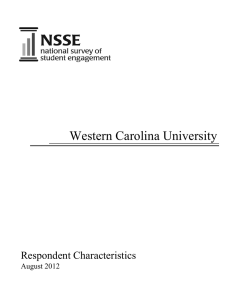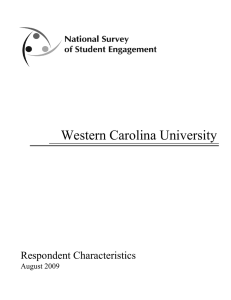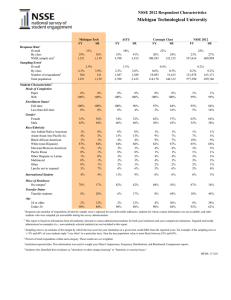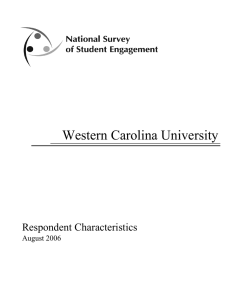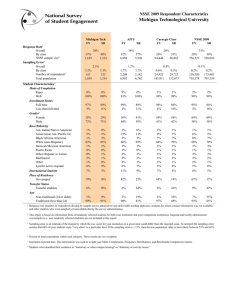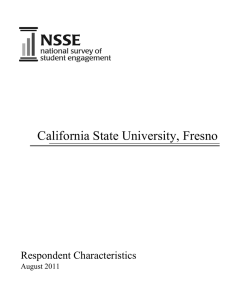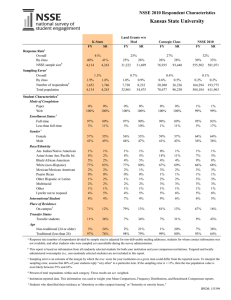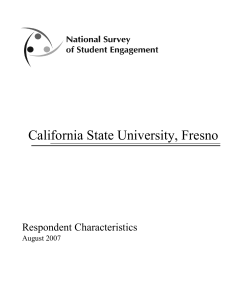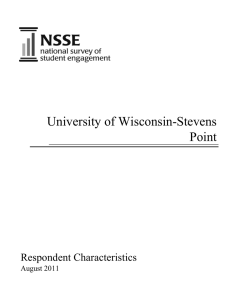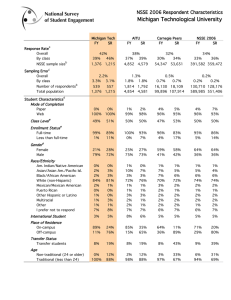Alabama A&M University Respondent Characteristics August 2009
advertisement
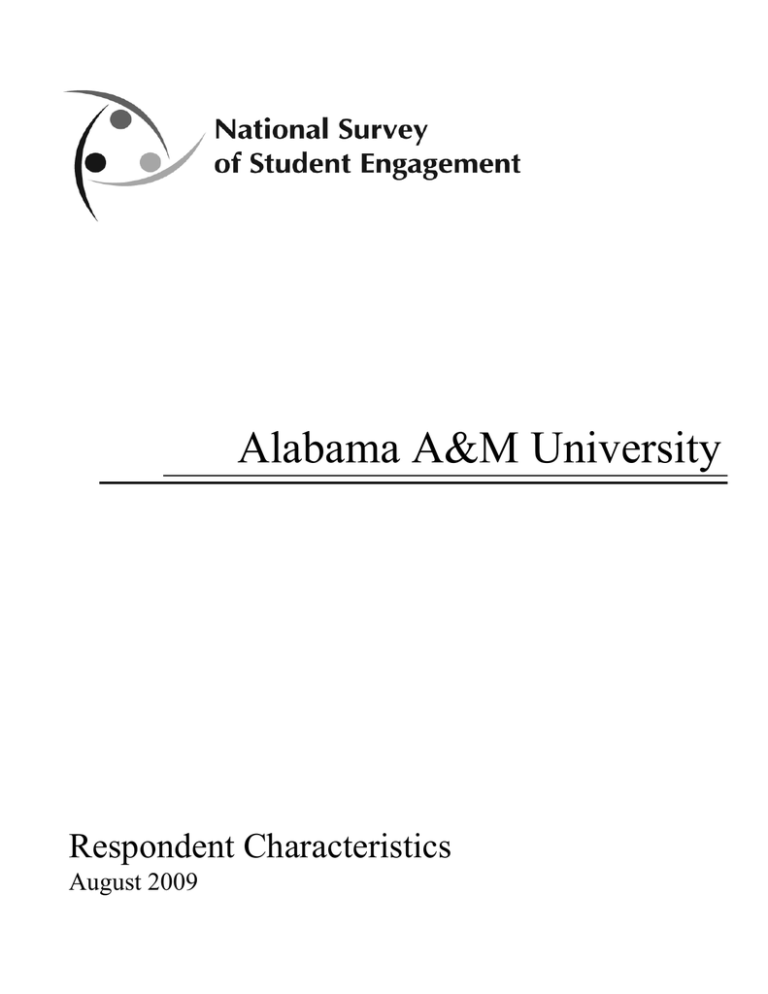
Alabama A&M University Respondent Characteristics August 2009 NSSE 2009 Respondent Characteristics Alabama A&M University Alabama A&M FY SR Response Ratea Overall By class NSSE sample sizeb 11% 870 Sampling Errorc Overall By class Number of respondentsb Total population Student Characteristicsd Mode of Completion Paper Web MECIC FY SR Carnegie Class FY SR NSSE 2009 FY SR 28% 30% 3,081 29% 26% 32% 169,092 160,075 31% 29% 34% 557,312 520,745 0.3% 0.4% 0.4% 44,673 51,030 192,586 197,053 0.1% 0.2% 0.2% 159,093 175,820 719,159 708,061 14% 18% 631 26% 4,236 9.3% 98 878 8.2% 116 632 2.6% 1,088 4,687 2.9% 927 4,523 5% 95% 8% 92% 5% 95% 10% 90% 2% 98% 2% 98% 2% 98% 2% 98% Enrollment Status e Full-time Less than full-time 98% 2% 90% 10% 93% 7% 86% 14% 93% 7% 81% 19% 95% 5% 84% 16% Gender e Female Male 67% 33% 61% 39% 63% 37% 70% 30% 66% 34% 66% 34% 64% 36% 63% 37% Race/Ethnicity Am. Indian/Native American Asian/Asian Am./Pacific Isl. Black/African American White (non-Hispanic) Mexican/Mexican American Puerto Rican Other Hispanic or Latino Multiracial Other I prefer not to respond 0% 0% 92% 0% 0% 2% 0% 2% 2% 3% 2% 0% 80% 8% 0% 0% 0% 2% 3% 4% 0% 3% 16% 64% 1% 1% 3% 3% 2% 6% 0% 2% 15% 68% 2% 1% 2% 3% 2% 6% 1% 6% 8% 67% 4% 1% 4% 3% 2% 5% 1% 5% 7% 69% 4% 1% 3% 2% 2% 6% 1% 6% 8% 68% 3% 1% 3% 3% 2% 5% 1% 5% 7% 70% 3% 1% 3% 2% 1% 6% International Student 3% 8% 10% 6% 6% 5% 6% 5% Place of Residence On-campusf 91% 18% 60% 24% 59% 13% 67% 17% Transfer Status Transfer students 9% 32% 17% 55% 10% 50% 9% 42% 8% 92% 43% 57% 15% 85% 45% 55% 9% 91% 42% 58% 7% 93% 35% 65% 6.2% 1.9% Age Non-traditional (24 or older) Traditional (less than 24) a Response rate (number of respondents divided by sample size) is adjusted for non-deliverable mailing addresses, students for whom contact information was not available, and other students who were sampled yet unavailable during the survey administration. b This report is based on information from all randomly selected students for both your institution and your comparison institutions. Targeted and locally administered oversamples (i.e., non-randomly selected students) are not included in this report. c Sampling error is an estimate of the margin by which the true score for your institution on a given item could differ from the reported score. To interpret the sampling error, assume that 60% of your students reply "very often" to a particular item. If the sampling error is +/-5%, then the true population value is most likely between 55% and 65%. d Percent of total respondents within each category. These results are not weighted. e Institution-reported data. This information was used to weight your Mean Comparisons, Frequency Distributions, and Benchmark Comparisons reports. f Students who identified their residence as "dormitory or other campus housing" or "fraternity or sorority house."
